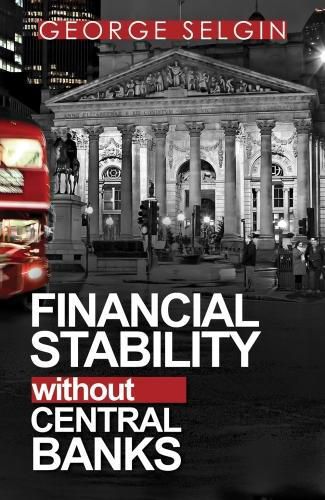Readings Newsletter
Become a Readings Member to make your shopping experience even easier.
Sign in or sign up for free!
You’re not far away from qualifying for FREE standard shipping within Australia
You’ve qualified for FREE standard shipping within Australia
The cart is loading…






George Selgin is one of the world’s foremost monetary historians. In this book, based on the 2016 Hayek Memorial Lecture, he shows how a system of private banks without a central bank can bring about financial stability through self-regulation. If one bank stretches credit too far, it will be reined in by the others before the system as a whole gets out of control. The banks have a strong incentive to ensure an orderly resolution if a particular bank is facing insolvency or illiquidity.
Selgin draws on evidence from the era of ‘free banking’ in Scotland and Canada. These arrangements enjoyed greater financial stability, with fewer banking crises, than the English system with its central bank and the US model with its faulty government regulation. The creation of the Federal Reserve appears to have increased the frequency of financial crises.
The book also includes commentaries by Kevin Dowd and Mathieu Bedard. Dowd asks whether free-banking systems should be underpinned by a gold standard,which he regards as a tried-and-tested institution at the heart of their success. Bedard challenges the assumption that the banking sector is inherently unstable and therefore requires state intervention. He argues that increases in government control have made the banking system more prone to crisis.
$9.00 standard shipping within Australia
FREE standard shipping within Australia for orders over $100.00
Express & International shipping calculated at checkout
George Selgin is one of the world’s foremost monetary historians. In this book, based on the 2016 Hayek Memorial Lecture, he shows how a system of private banks without a central bank can bring about financial stability through self-regulation. If one bank stretches credit too far, it will be reined in by the others before the system as a whole gets out of control. The banks have a strong incentive to ensure an orderly resolution if a particular bank is facing insolvency or illiquidity.
Selgin draws on evidence from the era of ‘free banking’ in Scotland and Canada. These arrangements enjoyed greater financial stability, with fewer banking crises, than the English system with its central bank and the US model with its faulty government regulation. The creation of the Federal Reserve appears to have increased the frequency of financial crises.
The book also includes commentaries by Kevin Dowd and Mathieu Bedard. Dowd asks whether free-banking systems should be underpinned by a gold standard,which he regards as a tried-and-tested institution at the heart of their success. Bedard challenges the assumption that the banking sector is inherently unstable and therefore requires state intervention. He argues that increases in government control have made the banking system more prone to crisis.